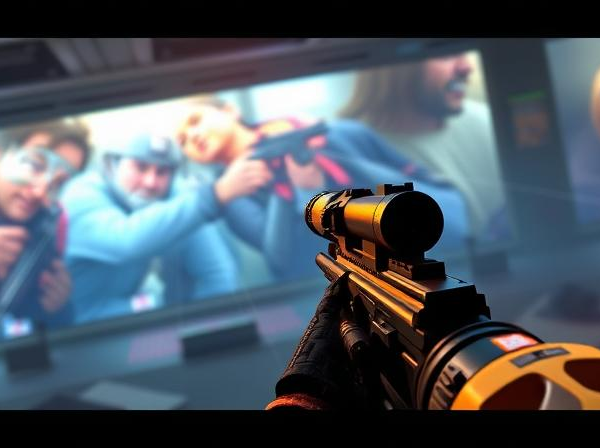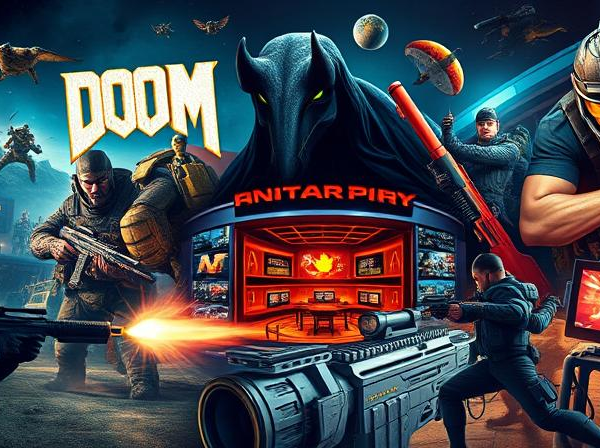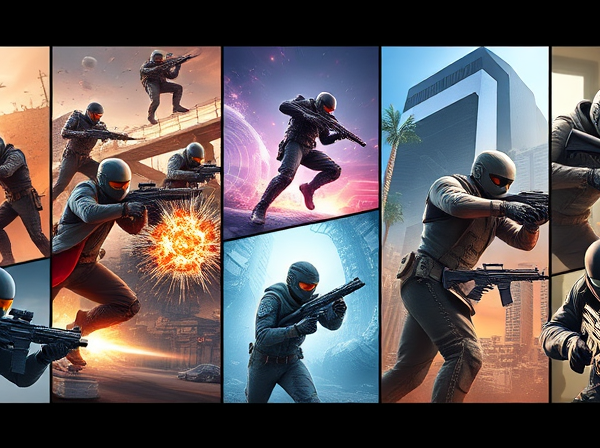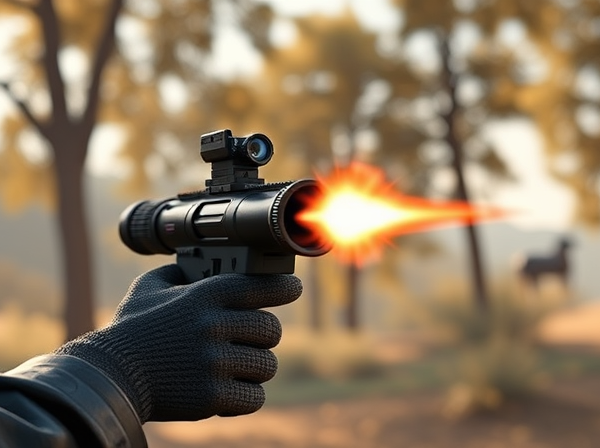Exploring the Immersive World of FPS Games
The Evolution of First-Person Shooter Games

First-person shooter (FPS) games have come a long way since their inception. In the early years, they were simple and straightforward, offering basic gameplay with limited graphics and sound effects. However, as technology advanced, so did the evolution of FPS games. Developers began implementing more realistic graphics, immersive audio, and complex gameplay mechanics that captivated players.
One major turning point in the evolution of FPS games was the introduction of multiplayer modes. With the emergence of online gaming, players could now connect with others from around the world, engaging in intense battles and cooperative missions. This revolutionized the genre, taking it beyond single-player experiences and creating communities of gamers who could interact and compete in virtual worlds. The ability to play with and against real people added a new layer of excitement and challenge to FPS games, fueling their popularity and cementing their place in gaming culture.
The Influence of FPS Games on Pop Culture

FPS games have undeniably had a significant influence on pop culture over the years. These games have not only created a dedicated fan base but have also infiltrated various forms of media, including movies, television shows, and music. The intense action, adrenaline-pumping gameplay, and captivating storylines have captivated audiences across the globe, making FPS games a prominent aspect of popular culture.
One evident impact of FPS games on pop culture is the emergence of gaming as a mainstream form of entertainment. With the rise of multiplayer online games, such as Counter-Strike and Call of Duty, gaming has gained widespread popularity. This shift has led to an increase in gaming conventions, esports events, and even dedicated gaming channels on streaming platforms. FPS games have become a common topic of discussion among gamers and non-gamers alike, further blurring the line between gaming and mainstream culture.
The Role of Graphics and Audio in Creating Immersive FPS Experiences

Graphics and audio play a crucial role in creating immersive first-person shooter (FPS) experiences. The visual elements, such as realistic environments, detailed character designs, and stunning special effects, transport players into the virtual world. With advancements in technology, developers are able to create breathtaking visuals that enhance the overall gameplay and immersion. From the intricate textures to the fluid animations, every aspect of the graphics contributes to the player’s sense of presence in the game world.
In addition to the visual elements, audio design is equally important in immersing players in FPS games. The sound effects, background music, and voice acting all contribute to creating a realistic and engaging environment. The ability to hear enemy footsteps approaching from behind or the distant sound of explosions adds an extra layer of immersion. Moreover, well-designed audio cues can provide players with vital information, leading to more strategic gameplay. By combining high-quality graphics and immersive audio, game developers can create an experience that captivates players and makes them feel as if they are truly part of the action.
The Impact of Storytelling in FPS Games

Storytelling plays a crucial role in the success and impact of first-person shooter (FPS) games. While the primary focus of FPS games tends to be on action and gameplay, a well-crafted story can elevate the experience to new heights. With an engaging narrative, players become emotionally invested in the game’s characters and world, creating a sense of connection and immersion.
A strong story in an FPS game not only provides a motivation for players to progress, but also enhances the overall atmosphere and gameplay. It can create a rich and immersive world that players are eager to explore. The storytelling elements, such as character development, plot twists, and unexpected moments, can add depth and complexity to the game, making the overall experience more memorable and satisfying. By balancing gameplay with storytelling, FPS games have the power to captivate players on both an emotional and interactive level, leaving a lasting impact on the gaming community.
The Importance of Level Design in Immersion

Level design plays a crucial role in creating immersive first-person shooter (FPS) experiences. From the moment players step into a virtual world, the design of the levels they navigate has the power to captivate or disconnect them. Intricate level layouts encourage players to explore and interact with their surroundings, fostering a sense of immersion within the game’s world. The placement of obstacles, cover, and interactive elements can also heighten the intensity and challenge of gameplay, making players feel truly engaged in the action.
A well-designed level not only provides visually appealing environments but also guides players through a seamless and intuitive progression. By carefully considering the pacing, flow, and interconnectedness of the levels, game designers can ensure a smooth and immersive gameplay experience. Whether it’s a sprawling open-world environment or a narrow, maze-like structure, the level design should facilitate a sense of purpose and direction for players, keeping them engaged and invested in the game’s narrative and objectives. With each new area they discover, players should feel a sense of anticipation and curiosity, further fueling their desire to explore and experience all that the game has to offer.
The Psychological Effects of Immersion in FPS Games

FPS games have the ability to immerse players into a virtual world, triggering various psychological effects. One of the most notable effects is the heightened sense of presence and agency. As players navigate through the game environment, they often experience a feeling of being fully engrossed in the digital world. This sense of presence can lead to a blurring of boundaries between reality and the game, making players feel as if they are truly part of the action.
Alongside the sense of presence, immersion in FPS games can also evoke strong emotional responses. The intense gameplay, accompanied by adrenaline-inducing action sequences, can elicit feelings of excitement, fear, and even exhilaration. These emotional responses can have a profound impact on players’ overall psychological state, creating an immersive experience that goes beyond mere entertainment. The combination of presence and emotional engagement lays the groundwork for a truly immersive experience in FPS games, one that can leave a lasting impression on players long after the game is over.
Exploring Different Subgenres of FPS Games

FPS games have come a long way since their inception, branching out into various subgenres that cater to different player preferences and gameplay styles. One prominent subgenre is the military shooter, which focuses on realistic combat scenarios and often includes features such as weapon customization, squad-based mechanics, and intense multiplayer battles. These games offer a visceral and immersive experience, allowing players to step into the boots of soldiers and engage in high-stakes missions in authentic military settings.
Another popular subgenre is the sci-fi shooter, which transports players to futuristic worlds filled with advanced technology, alien creatures, and epic battles. These games often emphasize fast-paced action, unique weapons, and imaginative environments that push the boundaries of reality. From traversing unknown planets to battling extraterrestrial forces, sci-fi shooters offer a thrilling escapade into the realm of science fiction.
The subgenres of FPS games provide a diverse range of experiences, catering to the varying tastes and preferences of players. Whether engaging in realistic military firefights or embarking on adrenaline-pumping sci-fi adventures, these games continue to captivate and challenge gamers worldwide.
The Role of Multiplayer Modes in Immersive FPS Experiences

Multiplayer modes play a vital role in enhancing the immersive experience of first-person shooter (FPS) games. These modes not only provide players with the opportunity to engage in thrilling battles with friends or strangers from around the world but also foster a sense of community. The ability to team up with others and work together towards a common objective creates a dynamic and interactive gaming environment that keeps players engaged for hours on end.
The competitive nature of multiplayer modes adds an extra layer of excitement to FPS games. Whether it’s team-based gameplay or a free-for-all showdown, the adrenaline rush from facing off against real human opponents is unparalleled. The unpredictable nature of human behavior and the constant challenge to outwit and outperform others continuously keeps players on their toes. Multiplayer modes also offer opportunities for social interaction, as players can communicate and strategize with each other using in-game voice chat or text messaging. The sense of camaraderie that forms among teammates fosters a strong sense of teamwork and friendship, making the multiplayer experience in FPS games truly immersive.
The Future of Immersion in FPS Games

In the ever-evolving world of first-person shooter (FPS) games, the future of immersion holds great promise. With advancements in technology, developers have been able to push the boundaries of realism, captivating players in immersive virtual worlds like never before. The future of immersion in FPS games lies in the seamless integration of cutting-edge graphics, realistic audio, and intuitive gameplay mechanics.
One of the key areas that will shape the future of immersion in FPS games is the development of virtual reality (VR) technology. Through the use of VR headsets and motion controllers, players can step into the shoes of the game’s protagonist, truly feeling like they are part of the virtual world. As the technology continues to improve, the future holds the potential for even more realistic and immersive VR experiences, making players feel fully immersed in the game environment. Additionally, advancements in haptic feedback technology will further enhance immersion by providing players with tactile feedback, creating a more sensory-rich experience.
Ethical Considerations in Immersive FPS Gameplay

Immersive first-person shooter (FPS) games have always been a subject of ethical scrutiny. As players dive into the virtual world, they often find themselves faced with intense violence and morally complex choices. One of the key ethical considerations in immersive FPS gameplay is the potential desensitization to violence. Studies have shown that prolonged exposure to violent content can desensitize individuals, making real-world acts of aggression seem less impactful or shocking. This raises questions about the responsibility of game developers in creating an immersive experience that balances excitement and entertainment without endorsing or glorifying violence.
Another important ethical consideration in immersive FPS gameplay is the issue of player behavior and toxic communities. In online multiplayer modes, players interact with one another in real-time, often engaging in competitive or cooperative gameplay. However, this environment can sometimes foster disrespectful behavior, harassment, and toxicity. The anonymity provided by online platforms can embolden individuals to act in ways they wouldn’t in face-to-face interactions. Game developers have a responsibility to create systems that discourage toxic behavior, promote inclusivity, and ensure a safe and enjoyable environment for all players.











